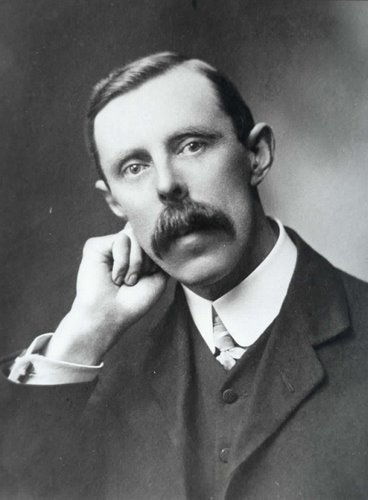 The people of Lochlee were very fond of Davie McPhail. The little lad was stone blind; yet, despite his heavy affliction, he showed as keen and as blithe a spirit as any on that Scottish country-side. The villagers said that there was a far-away look in his sightless eyes, as though, seeing nothing that they saw, he nevertheless peered into things that they were not permitted to behold.
The people of Lochlee were very fond of Davie McPhail. The little lad was stone blind; yet, despite his heavy affliction, he showed as keen and as blithe a spirit as any on that Scottish country-side. The villagers said that there was a far-away look in his sightless eyes, as though, seeing nothing that they saw, he nevertheless peered into things that they were not permitted to behold.When, in the summer of1871, Dr. Thomas Guthrie and Dr. John Ker were spending their holiday among the Grampians, they fell in love with Davie. They came upon him several times, and, each time, he furnished them with some fresh cause for wonder. They were tramping one afternoon across a rugged and romantic mountain-side. For hours they reveled in the varied panorama of crag and torrent, wood and waterfall, and saw no sign of life except the herds of red deer browsing down in the glen. All at once they were astonished at seeing, in the distance, a boy's kite. Their surprise was intensified when, on drawing near, they found Davie crouching among the fern on the hillside, holding the string. Clasping the twine firmly, he moved his hands to and fro, sometimes pressing them to his breast and sometimes holding them out at arm's length. His face shone as with secret ecstasy. 'Why, Davie lad,' exclaimed Dr. Ker, 'what's the good of your having a kite? You can't even see it!'
'No, sir,' replied Davie,' but I like to feel it pull!'
The incident has often struck me as being profoundly significant. We are affected more than we know by forces that we cannot see, but of which we feel the pull. It is by the pull of things that our destinies are shaped.
F W Boreham, ‘The Pull of Things,’ The Three Half-Moons (London: The Epworth Press, 1929), 216-217.
Image: Kite

